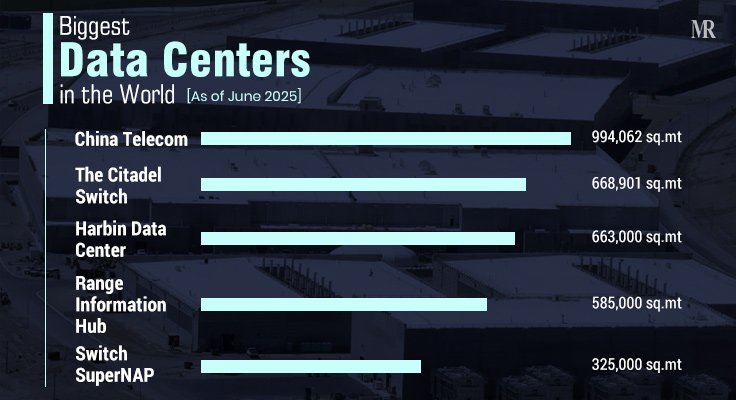Have you ever wondered what happens to returned goods? Welcome to the world of reverse logistics! In our rapidly evolving e-commerce era, it has gained significant momentum, enhancing speed, efficiency, and effectiveness.
Moreover, the process includes recycling, refurbishing, or reselling. It also plays a crucial role in reducing waste, minimizing environmental impact, and enhancing financial stability.
In this blog, we’ll explore the process of returning products and their contribution to today’s world. Let’s begin!
What is Reverse Logistics?
Reverse logistics refers to the supply chain process that moves products from customers to sellers or manufacturers. It is the reverse of the standard supply chain flow, where goods move from manufacturer to end consumer.
Aside from that, the growth of e-commerce has increased confidence to develop sustainably and efficiently. It can also refer to procedures like recycling, refurbishing, or reselling where the product’s disposal is under the control of the end consumer.
Reverse logistics is used by businesses when products are transported from their final destination back to the seller and possibly even back to the suppliers via the supply chain. Moreover, it seeks to secure recurring business and recover value.
Difference Between Reverse Logistics and Reverse Supply Chain
Reverse logistics deals with product returns and what happens to the items once the customer receives them. This involves developing and executing strategies to reduce losses and costs associated with returns while improving the returns experience.
Conversely, the reverse supply chain is the backward movement of goods that includes defective products from vendors. The items go from manufacturer to retailer to consumers which is unlike the usual supply chain.
Reverse Logistics & Traditional Logistics
- Traditional logistics involves the movement of goods from the manufacturer to the end consumer. Whereas, reverse logistics involves the movement of goods from the end consumer back to the manufacturer or seller.
- Transportation, distribution, inventory management, and purchasing are all part of traditional logistics. On the other hand, reverse logistics includes practices like recycling, remanufacturing, refurbishment, and returns handling.
6 types of reverse logistics
- Return management: This is the most common reverse logistics process. It deals with regular customer returns that include a smooth, hassle-free experience to increase customer loyalty and brand perception.
- Delivery failure: Goods that are not delivered are sent back to fulfillment centers, where they might be transported back to the manufacturer. However, successful companies handle delivery failure by fixing the problem and resending it.
- Unsold goods: The process of returning unsold products to manufacturers is primarily concerned with returning items from end users or fulfillment centers. It is often caused by delivery rejection, low sales, or related other reasons.
- Remanufacturing or refurbishment: This process includes repairing returned products to avoid losing money or profits on defective products while simultaneously reducing unnecessary waste.
- End of service life: For manufacturers to ensure the appropriate environmental disposal of their products, some products are returned when their beneficial uses reach an end.
- Equipment rental: Items that are rented or leased are returned to the manufacturer for recycling, disposal, or redistribution after a specific time frame.
5 Strategies to Optimize Reverse Logistics
- Use Data to Optimize Processes: You can determine why customers might be returning things by gathering data on product returns. After that, you can modify your product design, and sales, and forward logistics processes appropriately.
- Analyze Relevant Agreements and Policies: Go through and update everything related to returns and repairs for your business. Thus, your company’s return and repair policies might set it apart from the competition.
- Work closely with Suppliers: Working closely with suppliers can assist in guaranteeing that clients have a smooth, cohesive experience rather than a disorganized one that will be difficult for them to manage.
- Track products both forward and backward: You can locate the problem and issue recalls for specific lines rather than issuing them for the entire line by connecting raw materials to the final product and the customer order.
- Centralize Return Centers: Businesses can more effectively decide how to recover product value when they have a center. Likewise, consider allocating a section of your factory or warehouse to returns for a dedicated returns center.
Benefits of reverse logistics
Many industries aim to prolong the life cycle of products and processes, due to their numerous benefits. Let’s explore its major benefits!
- Cost saving: Manufacturers can reuse the packaging or even manufacture new materials from it and save costs on purchasing raw materials. Consequently, it will help companies to reduce the cost of manufacturing products.
- Control over stock: Return operations require a lot of work on the part of businesses, giving them more control over resources and goods, in general, helps manufacturers.
- Environmental protection: By lowering the amount of waste produced, reverse logistics helps to lessen its negative effects on the environment. Returned material is a link in a chain that involves recycling or reuse.
- Improved customer service: This gives the producer or distributor useful information. It makes it feasible to assess the causes of the return, areas for improvement, manage defective products upon delivery, etc.
Importance of Reverse Logistics to Your Business
Reverse logistics is a crucial component of a company’s operations and sustainability strategy. Here are some reasons why it’s important to your business:
- Improves Customer Experience: Efficient reverse logistics processes, particularly those related to returns and repairs, can enhance customer satisfaction and encourage repeat business.
- Reduces Waste: By managing returns effectively, businesses can reduce waste, benefiting both the bottom line and the environment.
- Minimizes Environmental Impact: Reverse logistics allows businesses to reduce their environmental footprint by reselling, reusing, and recycling products.
- Enhances Financial Stability: Effective reverse logistics can improve a company’s financial stability by recouping value from returned, damaged, or outdated products.
- Boosts Brand Image: Companies that handle product returns and recalls efficiently can enhance their reputation and brand image.
- Contributes to Corporate Responsibility: By reducing waste and promoting recycling, reverse logistics contributes to a company’s corporate social responsibility efforts.
5 Major Challenges of Reverse Logistics
Reverse logistics has many advantages, but there are several obstacles that companies must overcome to use it successfully. Here are some of the most common issues:
- More Complexity: The extra processes involved in collecting products from customers and returning them to the manufacturer or a third-party facility make reverse logistics a greater challenge than typical logistics.
- Warehouse area: Compared to traditional logistics, reverse logistics can demand up to 20% more space in the warehouse. Companies must make sure they have a space set out for handling returns.
- Time & Cost of Return Products: Reverse logistics can be costly; expenses for handling, shipment, and customer support alone may total up to 59% of a $50 item’s sale price.
- Regulation Compliance: To avoid penalties and legal ramifications, businesses need to make sure they abide by all applicable regulations about recycling, trash disposal, and product safety.
- Managing Customer Expectations: Companies must control customer expectations by providing unambiguous return guidelines, quick processing timeframes, and timely updates at every stage of the return procedure.
Final thoughts
We explored the intricate world of reverse logistics and learned how much it affects our daily existence. It reflects a commitment to sustainability, customer satisfaction, and financial stability.
We also learned that it transforms difficulties into opportunities, wastes into something valuable, and returns into repeat customers. So, the next time you return a product, you’re starting a new cycle of value regeneration.
Above all, we leave you with some fuel for thought:
- How can we further optimize reverse logistics?
- How can we turn the challenges of reverse logistics into opportunities for growth and innovation?
Tell us what you think!












